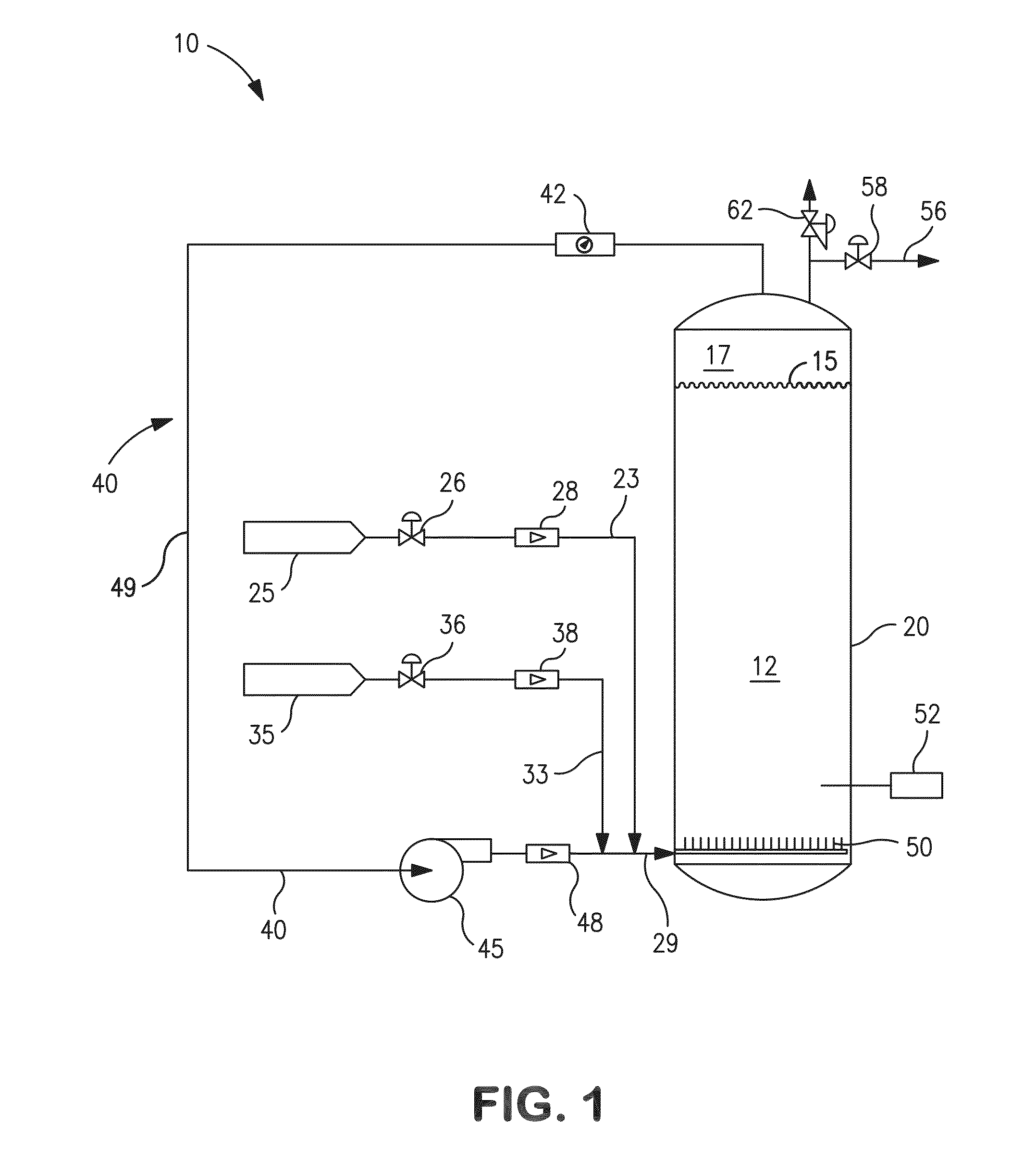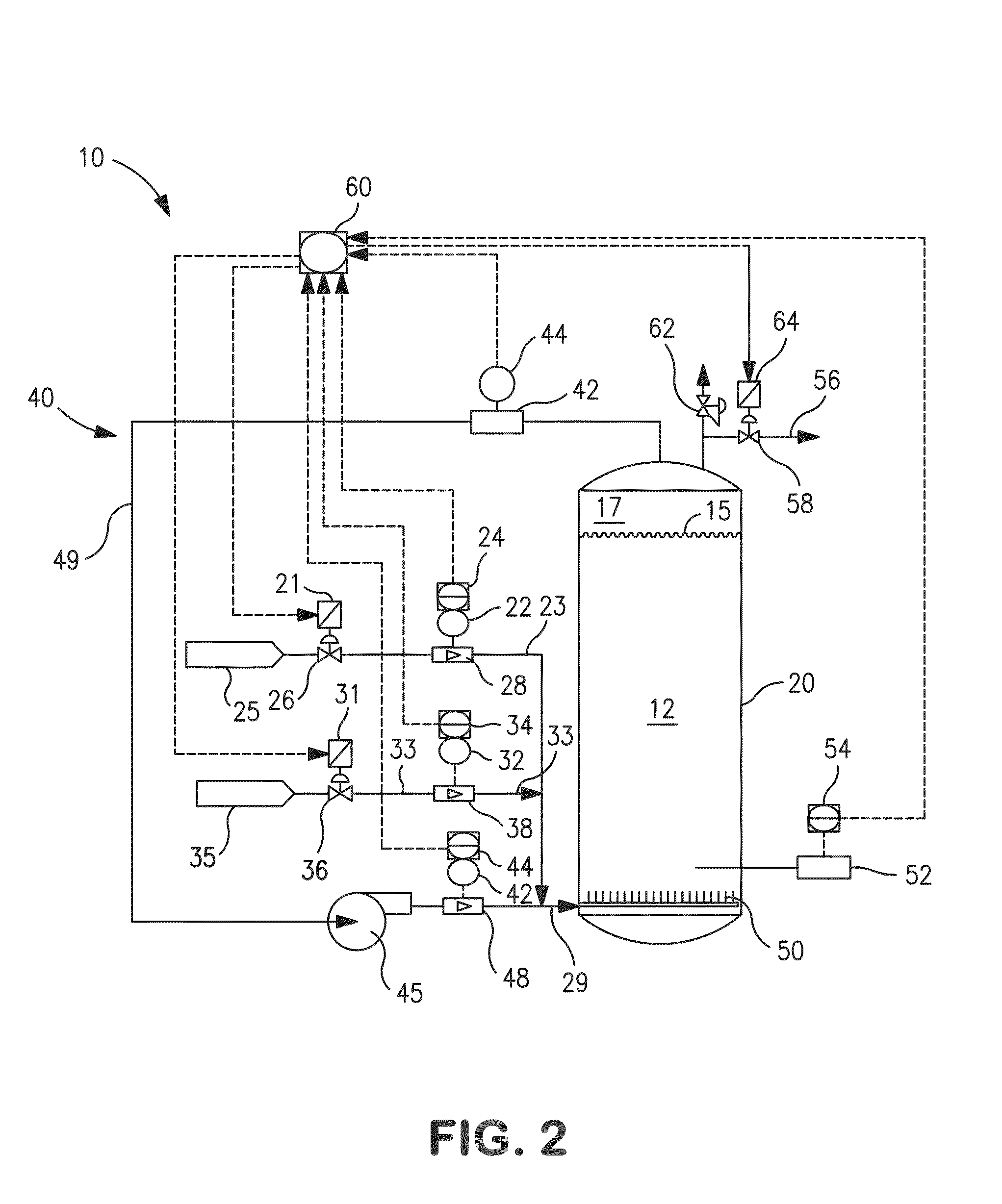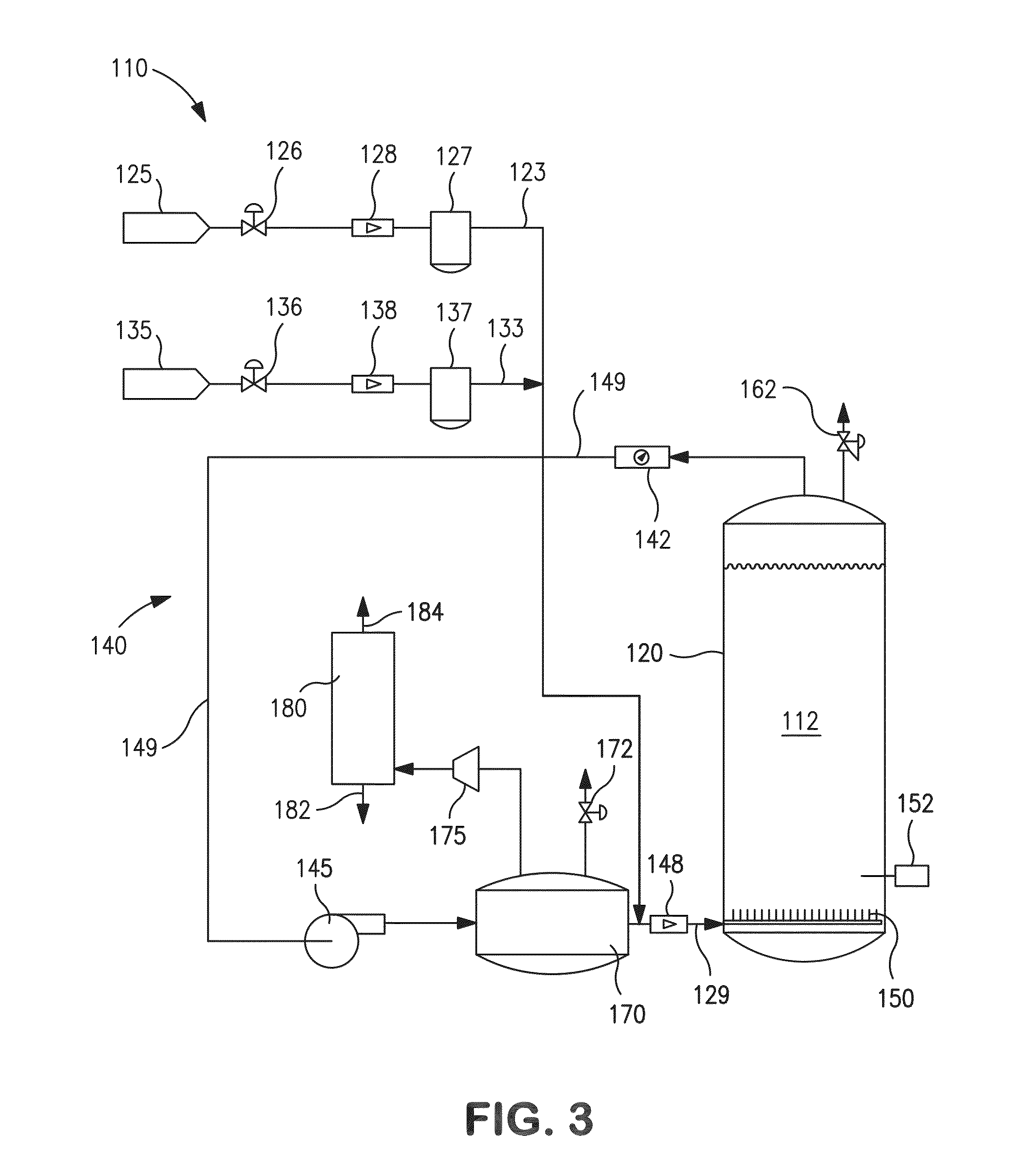System and method for micro-aeration based fermentation
a technology of micro-aeration and fermentation, applied in specific use bioreactors/fermenters, gas production bioreactors, after-treatment of biomass, etc., can solve the problems of product yield loss, less tolerance of toxic concentration levels, and general less robust microorganisms
- Summary
- Abstract
- Description
- Claims
- Application Information
AI Technical Summary
Benefits of technology
Problems solved by technology
Method used
Image
Examples
example
[0045]With reference to FIGS. 4A, 4B, 4C, and 4D, the following example shows the benefit of using respiratory quotient (RQ) as the preferred control parameter for micro-aeration based fermentation. As discussed above, RQ is defined as the molar ratio of the carbon dioxide evolution rate (CER) to the oxygen uptake rate (OUR). The OUR and CER were determined by measuring the gas flow rates and the concentrations of carbon dioxide and oxygen in the recycled off-gas. Under pseudo-steady-state and oxygen-limited conditions, the OTR can be calculated from the OUR. The comparison of 2, 3-BDO fermentation with RQ control and without RQ control was conducted using a 5 L fermenter employing the micro-aeration scheme as generally illustrated in FIG. 2. The control of OUR and RQ was realized by adjusting the aeration rate of the flow to the sparger.
[0046]When control of the micro-aeration based fermentation process is based simply on OUR (i.e. without RQ control), the maximum BDO yield (g / g) f...
PUM
| Property | Measurement | Unit |
|---|---|---|
| superficial velocity | aaaaa | aaaaa |
| volume | aaaaa | aaaaa |
| superficial velocity | aaaaa | aaaaa |
Abstract
Description
Claims
Application Information
 Login to View More
Login to View More - R&D
- Intellectual Property
- Life Sciences
- Materials
- Tech Scout
- Unparalleled Data Quality
- Higher Quality Content
- 60% Fewer Hallucinations
Browse by: Latest US Patents, China's latest patents, Technical Efficacy Thesaurus, Application Domain, Technology Topic, Popular Technical Reports.
© 2025 PatSnap. All rights reserved.Legal|Privacy policy|Modern Slavery Act Transparency Statement|Sitemap|About US| Contact US: help@patsnap.com



